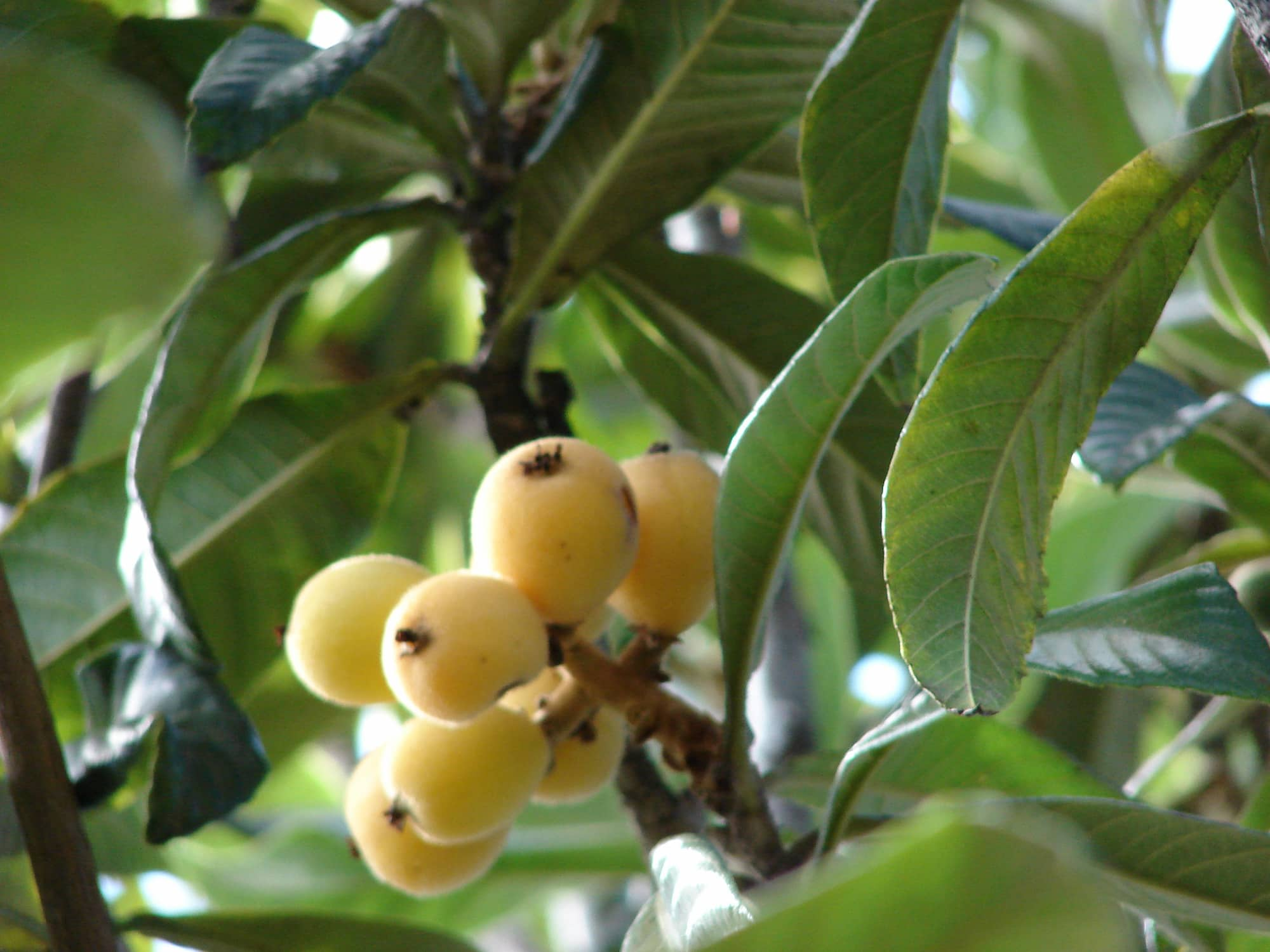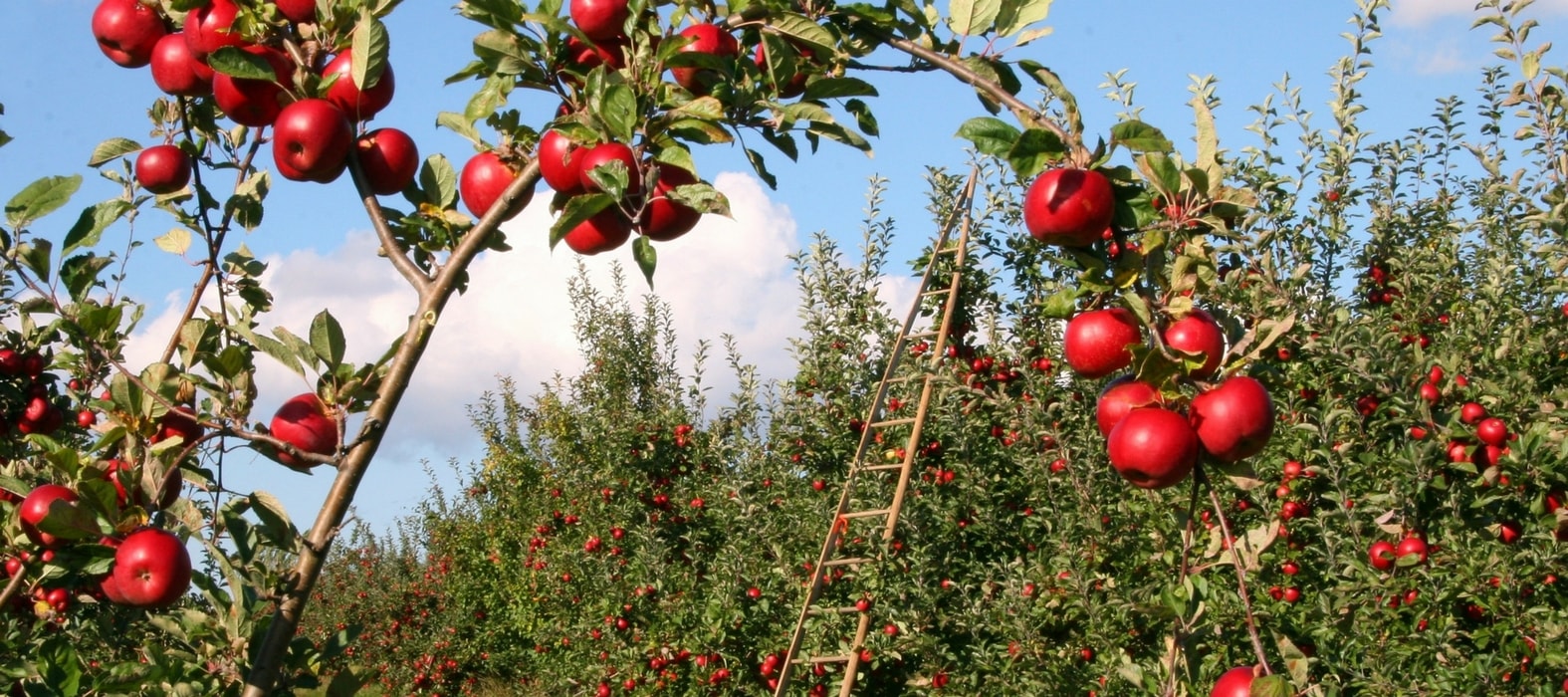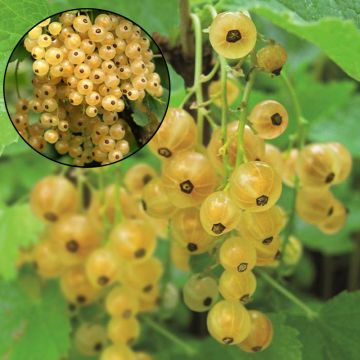

Mespilus germanica Belle de Grand Lieu - Medlar
Mespilus germanica Belle de Grand Lieu - Medlar
Mespilus germanica Belle de Grand Lieu
Common Medlar, Medlar
Special offer!
Receive a €20 voucher for any order over €90 (excluding delivery costs, credit notes, and plastic-free options)!
1- Add your favorite plants to your cart.
2- Once you have reached €90, confirm your order (you can even choose the delivery date!).
3- As soon as your order is shipped, you will receive an email containing your voucher code, valid for 3 months (90 days).
Your voucher is unique and can only be used once, for any order with a minimum value of €20, excluding delivery costs.
Can be combined with other current offers, non-divisible and non-refundable.
Why not try an alternative variety in stock?
View all →This plant carries a 6 months recovery warranty
More information
We guarantee the quality of our plants for a full growing cycle, and will replace at our expense any plant that fails to recover under normal climatic and planting conditions.
Description
The Belle de Grand Lieu Medlar is a variety that produces large fleshy fruits, measuring 4 to 6 cm in diameter and weighing up to 70 grams. They have a globular shape, a truncated top, and are crowned with 5 sepals of the calyx. The hairy skin is dark green during the season and turns reddish-brown when the fruit over-ripens. At this stage of ripeness, the medlar becomes pleasant to consume. The dark brown pulp is slightly fibrous, melting, creamy, sweet, with a slight acidity, and contains 5 woody seeds. It is a fruit of great nutritional value. When picked from the tree, medlars can be eaten as they are. By taking them between the index finger and thumb and applying a little pressure, the flesh bursts and can be savoured. The harvest is regular from year to year and very abundant. The common medlar is self-fertile and does not need the company of another medlar to bear fruit.
Mespilus germanica, commonly known as Medlar, Mêlier, Alchiminier, or Nesplier, belongs to the Rosaceae family, like Apple trees, Cherry trees, Pear trees, Plum trees... It was introduced in Greece around 700 BC, then in Rome in 200 BC. Later, the medlar was commonly cultivated until the 17th century, it was regularly found in markets. Then, while other fruit trees were reaching their peak (19th century), the medlar, on the contrary, gradually fell into oblivion. It is important to note that the common medlar is quite different from the Japanese Medlar (Eriobotrya japonica), which produces round yellow-orange fruits and is native to warm temperate regions of Asia. The Japanese medlar thrives in southern regions where winters ensure good fruiting, while the common medlar grows in colder regions, up to 2000 metres above sea level.
The Belle de Grand Lieu, with its origins poorly known, is one of those varieties selected for its large fruits. It forms a spreading bush or small tree with a rounded crown and numerous knotty branches, sometimes thorny, reaching a height of 4 to 6 metres and a spread of 4 to 5 metres at maturity. Its growth is quite slow in the first years, allowing it to establish well. Its twisted trunk is covered with grey-brown bark that cracks into plates as it ages, revealing a new orangish bark. Its deciduous foliage consists of wavy, oblong, alternate leaves, 10 to 15 cm long and about 5 cm wide, with a prominent central vein. Dark green on the upper side and covered with a whitish down on the underside during the season, the leaves then take on shades ranging from yellow to brown with orange hues. They persist on the tree until late in the autumn.
The remarkably decorative flowering is very abundant in April-May, at the tips of young branches. On a short peduncle, the solitary flower, 4 to 5 cm in diameter, consists of 5 petals borne by a calyx with 5 sepals, with 30 stamens in the centre. The bisexual flowers have both female (pistils) and male (stamens with anthers) reproductive organs, which can self-pollinate, making this plant completely self-fertile. The nectar-rich flowers attract pollinating insects (bees, bumblebees, butterflies, hoverflies...). The medlar is harvested around November, ideally after a frost that softens the fruit and makes it over-ripe (soft), otherwise it is too astringent. The cold helps transform tannins into sugars. At this stage, birds are fond of them, so vigilance is required. Harvest delicately by hand, as the skin is thin and the flesh is soft. One plant can annually produce 4 to 8 kg depending on the growing conditions and soil fertility. If the first frosts are late or insufficient, a week in the freezer can enhance the ripeness of the fruit. To accelerate the ripening of hard-picked medlars, they can be left to soften in a cool place, on a bed of straw to prevent drying out. They can be stored like this for 3 to 6 weeks and then become edible.
After over-ripening, the flesh of the Belle de Grand Lieu medlar becomes tender, sweet and slightly acidic, with a texture like puree. It is delicious to consume raw. When halved, it can be enjoyed with a spoon, taking care to remove the stones. Do not eat the seeds, as they contain hydrocyanic acid, a toxic substance. It is also an ideal fruit for making jam, jelly, compote, marmalade, or fruit paste. It can also enhance savoury dishes based on white meats (poultry, veal, pork, rabbit...). It pairs wonderfully with foie gras and cheeses. Without altering the flavours of this fruit, the pulp can be frozen to extend its enjoyment throughout the winter. The medlar is a moderately calorific fruit (approx. 50 Cal/100 g). Its content of vitamins B and C, antioxidants, soluble fibres (pectin), and minerals (potassium, calcium, iron, manganese, phosphorus) make the medlar good food for the body. It is a healthy, natural, and tasty fruit. Medlars can also be used to make alcoholic beverages: Aperitif and Ratafia from the overripe fruit and liqueur from the seeds.
In the category of medlars, the Belle de Grand Lieu is a productive and vigorous variety, with relatively quick fruiting, around 3 to 4 years, becoming optimal after 8 to 10 years. In the garden, its natural, rustic silhouette makes it a beautiful addition to an edible or ecological hedge, or in an orchard, in association with other fruit trees or as a solitary tree on the lawn.
Plant habit
Fruit
Flowering
Foliage
Botanical data
Mespilus
germanica
Belle de Grand Lieu
Rosaceae
Common Medlar, Medlar
Cultivar or hybrid
Other Medlar trees
View all →Planting and care
Plant the Belle de Grand Lieu Medlar in any good, well-drained garden soil, preferably moist and deep, avoiding soils that are too chalky or too clayey. For the proper development of the fruits, give it a sunny position. Planting is best done in autumn, from October to November, to promote rooting before winter and to enjoy flowering from the first year. In any case, avoid periods of frost or high temperatures. It prefers a sunny position. Since its flowering is fragile, it is a good idea to shelter it from strong winds. Space the plants 1.5 to 3 m apart in informal hedges, and 4 to 5 m apart in isolation in all directions.
Prepare the soil by removing stones and unwanted weeds. Dig a planting hole, two or three times the size of the root ball or root volume. Make sure to separate the subsoil from the topsoil. Mix crushed horn or well-rotted compost or potting soil with the subsoil and pour this mixture into the bottom of the planting hole. For potted plants, remove the root ball and gently scrape it to loosen the roots and stimulate them. For bare-root plants, soak the roots in pralin to prevent air pockets between the roots and the soil. You can either prepare the pralin by mixing 1/3 very fine soil or potting soil, 1/3 cow dung or compost, and 1/3 rainwater, or buy it commercially. Place your subject in the centre of the hole, making sure to position the collar at ground level, cover it with topsoil and firm it down. Water generously (about 10 L). Attach the stake to the trunk, crossing the tie in a figure of 8, so that they do not rub against each other.
In the summer, water regularly to help it establish, especially during the first two dry summers. Mulch the soil to maintain some moisture, always after watering your medlar abundantly, so that its roots do not develop only at the surface of the soil, which would make it more susceptible to water shortage.
Every spring, apply well-decomposed compost at the base of your medlar to support fruit production.
The Medlar can be susceptible to moniliosis (a fungus causing fruit rot). Remove affected fruits. Spray a decoction of horsetail during flowering and apply copper-based treatments such as Bordeaux mixture when the leaves fall and during bud break. Powdery mildew also attacks the medlar. It is recognizable by the white fuzz that appears on the leaves or the brown spots on the medlars. Powdery mildew can be controlled with sprays of cow's milk or sulfur. In case of aphid infestation, spray water with black soap.
In southern Europe, make sure to protect the harvest from the Mediterranean fruit fly. If the fly settles in a few fruits, remove them manually and destroy them. This will eliminate the eggs and larvae. In early spring, you can cover the ground with a very fine mesh net around the base of the trees to block the ascent of overwintered flies.
Planting period
Intended location
Care
Planting & care advice
This item has not been reviewed yet - be the first to leave a review about it.
Similar products
Haven't found what you were looking for?
Hardiness is the lowest winter temperature a plant can endure without suffering serious damage or even dying. However, hardiness is affected by location (a sheltered area, such as a patio), protection (winter cover) and soil type (hardiness is improved by well-drained soil).

Photo Sharing Terms & Conditions
In order to encourage gardeners to interact and share their experiences, Promesse de fleurs offers various media enabling content to be uploaded onto its Site - in particular via the ‘Photo sharing’ module.
The User agrees to refrain from:
- Posting any content that is illegal, prejudicial, insulting, racist, inciteful to hatred, revisionist, contrary to public decency, that infringes on privacy or on the privacy rights of third parties, in particular the publicity rights of persons and goods, intellectual property rights, or the right to privacy.
- Submitting content on behalf of a third party;
- Impersonate the identity of a third party and/or publish any personal information about a third party;
In general, the User undertakes to refrain from any unethical behaviour.
All Content (in particular text, comments, files, images, photos, videos, creative works, etc.), which may be subject to property or intellectual property rights, image or other private rights, shall remain the property of the User, subject to the limited rights granted by the terms of the licence granted by Promesse de fleurs as stated below. Users are at liberty to publish or not to publish such Content on the Site, notably via the ‘Photo Sharing’ facility, and accept that this Content shall be made public and freely accessible, notably on the Internet.
Users further acknowledge, undertake to have ,and guarantee that they hold all necessary rights and permissions to publish such material on the Site, in particular with regard to the legislation in force pertaining to any privacy, property, intellectual property, image, or contractual rights, or rights of any other nature. By publishing such Content on the Site, Users acknowledge accepting full liability as publishers of the Content within the meaning of the law, and grant Promesse de fleurs, free of charge, an inclusive, worldwide licence for the said Content for the entire duration of its publication, including all reproduction, representation, up/downloading, displaying, performing, transmission, and storage rights.
Users also grant permission for their name to be linked to the Content and accept that this link may not always be made available.
By engaging in posting material, Users consent to their Content becoming automatically accessible on the Internet, in particular on other sites and/or blogs and/or web pages of the Promesse de fleurs site, including in particular social pages and the Promesse de fleurs catalogue.
Users may secure the removal of entrusted content free of charge by issuing a simple request via our contact form.
The flowering period indicated on our website applies to countries and regions located in USDA zone 8 (France, the United Kingdom, Ireland, the Netherlands, etc.)
It will vary according to where you live:
- In zones 9 to 10 (Italy, Spain, Greece, etc.), flowering will occur about 2 to 4 weeks earlier.
- In zones 6 to 7 (Germany, Poland, Slovenia, and lower mountainous regions), flowering will be delayed by 2 to 3 weeks.
- In zone 5 (Central Europe, Scandinavia), blooming will be delayed by 3 to 5 weeks.
In temperate climates, pruning of spring-flowering shrubs (forsythia, spireas, etc.) should be done just after flowering.
Pruning of summer-flowering shrubs (Indian Lilac, Perovskia, etc.) can be done in winter or spring.
In cold regions as well as with frost-sensitive plants, avoid pruning too early when severe frosts may still occur.
The planting period indicated on our website applies to countries and regions located in USDA zone 8 (France, United Kingdom, Ireland, Netherlands).
It will vary according to where you live:
- In Mediterranean zones (Marseille, Madrid, Milan, etc.), autumn and winter are the best planting periods.
- In continental zones (Strasbourg, Munich, Vienna, etc.), delay planting by 2 to 3 weeks in spring and bring it forward by 2 to 4 weeks in autumn.
- In mountainous regions (the Alps, Pyrenees, Carpathians, etc.), it is best to plant in late spring (May-June) or late summer (August-September).
The harvesting period indicated on our website applies to countries and regions in USDA zone 8 (France, England, Ireland, the Netherlands).
In colder areas (Scandinavia, Poland, Austria...) fruit and vegetable harvests are likely to be delayed by 3-4 weeks.
In warmer areas (Italy, Spain, Greece, etc.), harvesting will probably take place earlier, depending on weather conditions.
The sowing periods indicated on our website apply to countries and regions within USDA Zone 8 (France, UK, Ireland, Netherlands).
In colder areas (Scandinavia, Poland, Austria...), delay any outdoor sowing by 3-4 weeks, or sow under glass.
In warmer climes (Italy, Spain, Greece, etc.), bring outdoor sowing forward by a few weeks.




















































